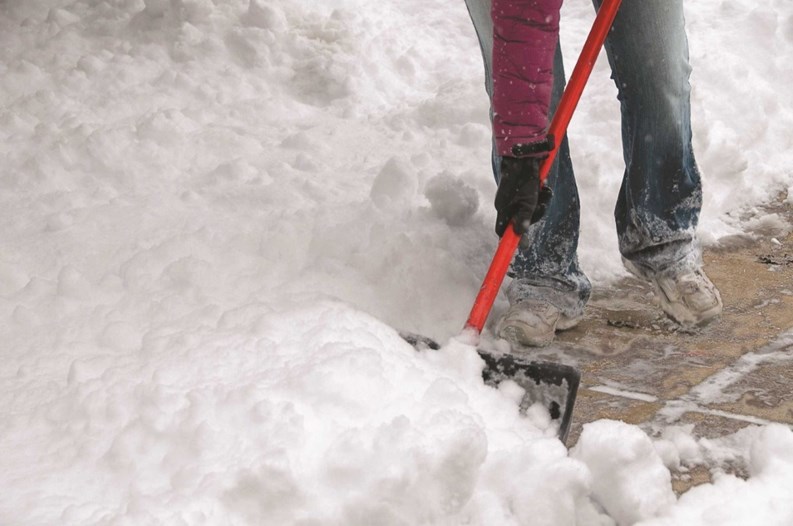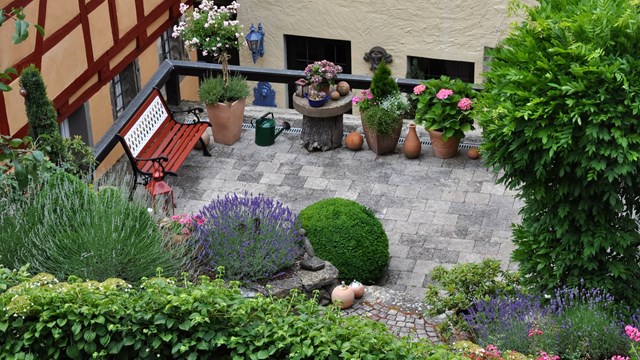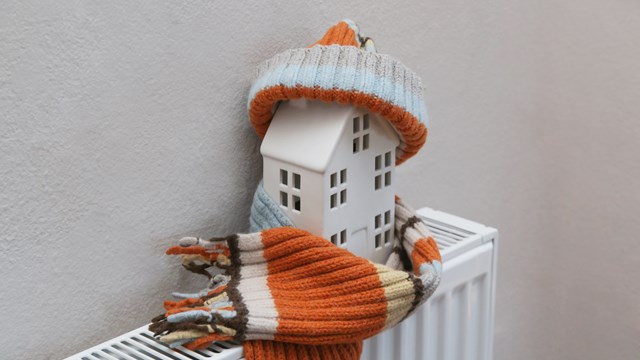Ah, the “dog days” of August—ideal for lounging around the pool, hop-scotching from air-conditioned home to air-conditioned stores and offices, or slipping away for a revitalizing vacation. Unless, of course, you happen to be a community association manager or board member whose attention is already focused on the season that lies ahead.
From the roof overhead to the pavement underfoot, condominium properties need attention now if they’re going to escape the ravages of New England winters.
“It’s important to have a maintenance checklist for the season,” says James Butler, president of J. Butler Property Management in Tewksbury, Massachusetts. “Each property is different. If you have a rubber roof, you want to clean the drains on top of the building; or you might be cleaning gutters on other properties.”
Butler’s list of preparations for the changing seasons is a long one, from winterizing irrigation systems and clearing storm drains to checking heating systems and stocking ice-melting supplies. Staying ahead of the maintenance game is always essential—but even more so when New England’s most challenging season is looming. “If you haven’t prepared in advance, vendors get bogged down because everyone will be calling them,” Butler cautions. In September and October, for example, associations want to be sure their plowing contracts are lined up. You just never know when that first storm might arrive. Remember the snowstorm on Halloween, just a couple of years ago? “I like to have all my plowing contracts signed by October 15,” Butler says.
By November, the ice-melt buckets are outside of building doors. Uninsulated pipes above carports or garages may have heating tapes that need to be plugged in. Oil burners need to be cleaned before temperatures drop and thermostats are turned up.
For each property in his portfolio, Butler’s computer contains a preventive maintenance checklist, to ensure that no essential preparation slips past his watchful eye.
With so much to do, where does one begin? Here are some tips from experts in the community association maintenance field.
Landscaping
Late summer and early autumn are busy times around the condo property—providing an opportunity to not only avoid winter damage, but also to give some plants a boost for the year to come. “It’s the time you want to do aeration and overseeding” of lawns, says Bart Poulin, the director of operations at Greener Horizon Landscaping in Middleboro, Massachusetts. “In the fall, before winter sets in, use a slow release fertilizer with nitrogen, giving the lawn the nitrogen it needs. Some people think about it in the spring, but the best time is in the fall.”
Fall is also the time, he adds, to winterize irrigation systems, blowing all water out of the lines. “You want to winterize the backflow and make sure all water is out of it,” he says.
In the flower beds, cut back any perennials that lack winter interest, and remove the annual plants. “Pruning dead wood out of the larger trees will help you get through the winter, so you don’t have trees or limbs coming down—especially close to buildings or power lines,” he adds.
And the evergreens that are ubiquitous in New England landscapes can use a little help, too. Some evergreens, like arborvitae, can also be loosely tied to protect them from breakage when the snow load increases.
Up on the Roof
“Every roof should be checked before winter,” Mike McDuffee of Winthrop, Massachusetts-based Corolla Roofing says without hesitation. “You want to check after the leaves fall, so you can clean out any leaves that will be a problem later on.” While looking for, and removing, such clog-creators may seem obvious, an effective fall roof inspection takes a trained eye. “The most critical thing is if there’s been any roof traffic—service workers, TV or microwave dish guys, HVAC services. They can create damage that goes unreported.
“Winter weather is going to exacerbate any problems, when you have snow, ice and slush. And winter is the worst time to try to find and fix leaks,” McDuffee warns. “It makes no difference whether a roof is new or old, PVC or rubber. Any flat roof should be checked out,” he says. The time and small expense involved in a fall inspection, he says, are minor compared to the cost of damage that can be done inside the building when a leak occurs.
Shingle roofs, McDuffee says, merely require a visual check for missing or wind-damaged shingles or loose ridge vents.
But no matter the roof style or material, he stresses, “look at tree branches. Under the weight of snow, they can punch into the roofing and cause damage.”
Heavy snowfalls—especially heavy, wet snowfalls—may require snow removal from roofs in the winter. But fall is the time to talk to roofers who will be able to carefully, professionally and safely clear that weighty snow. Inexperienced personnel, he says, can damage a roof while trying to clear it, and may not have proper insurance coverage— opening the condominium door to liability issues.
“The worst condition is when you have a snow load and then you get rain. The snow turns to slush … and hydrostatic pressure wants to find a point of entry” into the building. The weight of the water will drive it through any opening, no matter how small, and the building materials will create a wicking effect, pulling the water in. Fall, McDuffee reiterates, is a good time for a thorough inspection and the last opportunity to fix potential leaks before Old Man Winter puts New England roofs to the test.
Up in Smoke
And there’s more to the building’s topside than shingles. Whether equipped with fireplaces, or not, many suburban condo buildings sport chimneys — and they aren’t just there for decoration. “Most people are unaware that they need to have their chimneys checked or that they’re actually using the chimneys just about every day of the year,” says Dan Junkins at Billy Sweet Chimney Sweep, with offices in Boston, on the North Shore, and in Portland, Maine.
While “chimney sweep” may conjure up images of top-hatted workers coated in black soot, there’s more to chimney companies today than meets the eye. “We still do a lot of sweeping,” Junkins says, “and the best time to do that is in the summer because we get pretty busy in the fall.” But even associations that lack wood-burning fireplaces need to stay on their toes, chimney-wise, he cautions.
The exhaust going up the chimney—no matter its source—contains substances that can create problems. “Gas is more efficient (burning) than a fireplace, but it generates a lot more condensation,” he says. That moisture, mixed with hydrochloric acid, over the years will eat away at the chimney material. And you won’t even know it.
But Junkins will—thanks to the company’s camera system. To clean and check the flue, the sweep sends a flexible rod up the chimney, brushing the soot and efflorescence down, where it’s neatly vacuumed and hauled away. “Then, when we’re done with the cleaning, we use a camera system that’s designed to go up the chimney,” he says. “It has a line feed, with a computer screen, and we’re able to see what’s going on” inside the flue. This Level 2 inspection looks at the chimney from bottom to top. (A Level 1 inspection, he notes, simply relies on a flashlight for viewing the interior.)
“We examine it, to see: How stable is the masonry? Is the mortar cracking in the brick? Is there a liner? What’s the condition of that liner? It may need to be watched, repaired or replaced,” he says. As licensed contractors, Billy Sweet’s crews can also take care of rebuilding, pointing or installing liners.
“Especially in New England, where you’re dealing with some of the oldest housing stock in the country, you’ll often find problems,” he says, while noting that newer isn’t always better—or a reason to be complacent. “Masonry done before World War II was phenomenal work. But after World War II, there was a boom in housing, and a lot of housing that was built fast. The masonry from the 1950s and ‘60s is generally not as good quality masonry.”
Another concern, he notes, is the popularity of zero-clearance fireplaces in many multi-family buildings—including those built during the energy crises of the ‘70s and ‘80s. The fireplaces are vented by metal chimneys housed in wood chases, or faux-brick panels. “They probably have a life span of 10 to 15 years, and many we see are beyond their life span—and the companies are out of business,” Junkins says, “Knowing what’s going on in the chimney, seeing the streaming video camera inspection, can really give you peace of mind.”
Moving Along
The harsh weather that pounds on roofs also plays havoc with its roads, driveways and parking lots.
If residents are going to enjoy smooth rides—and avoid expensive asphalt replacement—maintenance during the summer and fall is essential. “First, make sure all cracks are sealed shut,” advises Craig Swain, president of New England Sealcoating in Hingham, Massachusetts. Water that seeps through cracks and gets under the pavement can wreak havoc with both the asphalt and the association’s pocketbook.
Sealcoating—best done in the spring, but still an option in the early fall—is a property’s best defense against damage down the road. “If you don’t sealcoat, the pavement gets dry,” Swain says, leading to premature aging. Any repairs that need to be made, with cracks or potholes, can be done into November, but, as with all preventive maintenance, sooner is better than later.
“You’ve got do preventative maintenance,” Swain stresses. “Once you get to a certain point, it deteriorates really fast. You’ve got to keep up with it and maintain it. The investment they have in asphalt is huge, especially with the price of asphalt today.”
Procrastination, he notes, can be expensive. “A lot of people call us when it’s too far gone. They want us to crack seal and sealcoat it – but they should have done it about 10 years before,” he says. “A lot of calls we get, it’s too late. You have to pulverize it and repave it, and that’s costly.
Finally, he says, fall is a good time to renew the pavement markings. “If the lines are faded now, when the ice and snow hits, you won’t be able to see them,” he cautions.
Still think August is a time for relaxing and having fun in the sun? Sorry, but there’s plenty of work to be scheduled now to avoid unpleasant surprises when winter makes its blustery entrance. And, as the saying goes, an ounce of prevention is going to be worth a ton of cure as repair and replacement costs continue to rise.
Pat Gale is associate editor of New England Condominium.







Leave a Comment